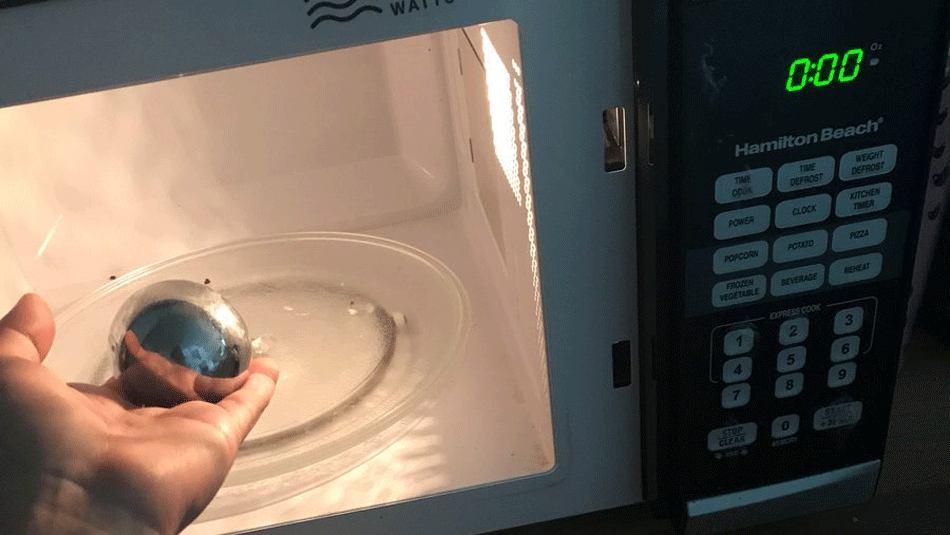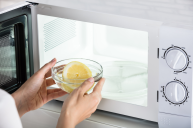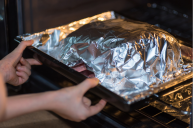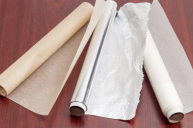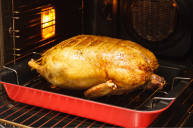Yes, it's true. I have to write this article on why it's unsafe to put aluminum foil because there is a little trend in Japan that has been totally lost in translation and now has Americans blowing up their microwaves. Let's go back to the beginning. In March, Japanese twitter use @Asu_Astell posted his DIY project of a nearly perfect "metal ball" of aluminum foil.
Videos by Wide Open Country
It's not too hard to do, it just takes time to create a perfectly smooth surface. He told Buzzfeed News that he used a rubber hammer to shape a sphere of aluminum foil for about two hours, and went back to hammering again. Finally, he sanded it down with sandpaper and used liquid abrasive to polish the ball. And that is how he did it, and also where the problem starts.
??????????????????16m
???????????????????
????????????????????? pic.twitter.com/zJsVJh6cQ7— ?? (@Asu_Astell) March 16, 2018
Because we're all smart internet users, we know just how easily information can be misused. That is what happened in the case of this very innocent tweet because somehow, it soon became this tweet.
I just tried this. If you put a tight ball of tin foil in the microwave for a few minutes it turns into a real ball. Can?t believe it actually worked pic.twitter.com/h32voZnya2
— Kody (@KodyJohnJohn) April 2, 2018
Obviously this user did not try this out, or else he would have experienced a very different reality. However, Twitter just took it farther and farther.
Works but you have to leave it in for at least 10 minutes pic.twitter.com/IzaL5BC4Eu
— Dom (@domaloevera) April 2, 2018
Some users even dispensed their "very wise" advice.
https://twitter.com/FvckingCoolie/status/979923496666042379?ref_src=twsrc%5Etfw&ref_url=https%3A%2F%2Fwww.buzzfeed.com%2Fbradesposito%2Fdo-not-foil-at-home
Until, finally, someone tried it. And of course, it didn't end well.
Bitch ass nigga. pic.twitter.com/X7vFe1VcZR
— Owns an air fryer now. (@DJWallieMayne) April 2, 2018
Other Twitter users were vigilant in reminding folks that you cannot put aluminum foil in the microwave oven, but sometimes that just doesn't help, even in the case of food safety. Sometimes, you need to know why something won't work. And this is why we are here to explain why microwaving tin foil is a terrible idea, if the photo above wasn't enough for you.
It's not just aluminum foil that doesn't belong in the microwave, it is all metal. And as we explained in our comprehensive cooking tools post, aluminum foil is actually thinly pressed metal leaves in small pieces. The average thickness of aluminum foil is about .2 millimeters. It can be used in the oven to cover metal pans and baking dishes because the oven doesn't use microwaves (stay with me). Foil containers are also popular to-go or doggy bag containers for leftovers. Here's what happens when you microwave food covered in foil.
So your microwave oven walls are made of metal, and it emits heat in the form of microwaves that then heat your food. Radio waves are typically absorbed and converted into heat through atomic motion, but in the case of metal in the microwave, it reflects those microwaves. A heavy metal pan in the microwave simply wouldn't cook because it would reflect the heat. The food item inside would stay cold; no heat would reach it to cook food.
Remember how we mentioned aluminum foil is less than .2 millimeters thick? Well, the electric fields in microwaves can cause that heat and energy to flow in small amounts of electric currents. While a thicker pan or metal covering wouldn't be affected by microwave energy, thin pieces of tin foil certainly are. They heat up so quickly that they can spark fire. It's even worse if the foil is crinkled, too, because those sharp edges spark and if they touch another flammable material (like wax paper), look out.
To keep it simple, we just say don't place any non-metal during microwave cooking. No matter how smooth foil is, just stick to plastic wrap or paper towels. Foil can go into the conventional oven and foil shielding maintains heat well, but if you're looking for a non-stick surface, parchment paper is best.
So the microwave is a great invention, but it's not perfect. Stick to reheating your hot dogs the simple way and use a microwave-safe utensil. Just please, never put aluminum foil in the microwave.

